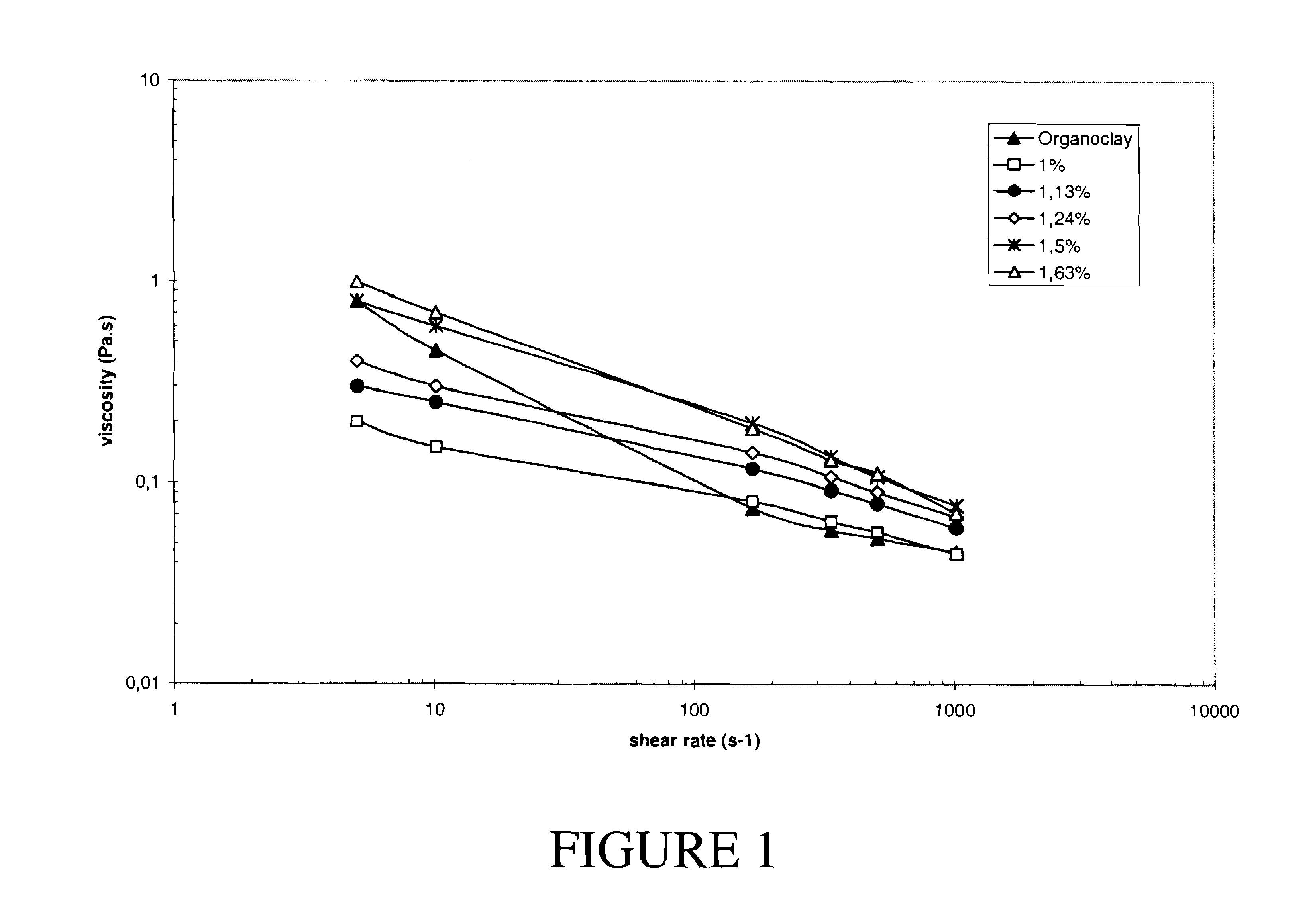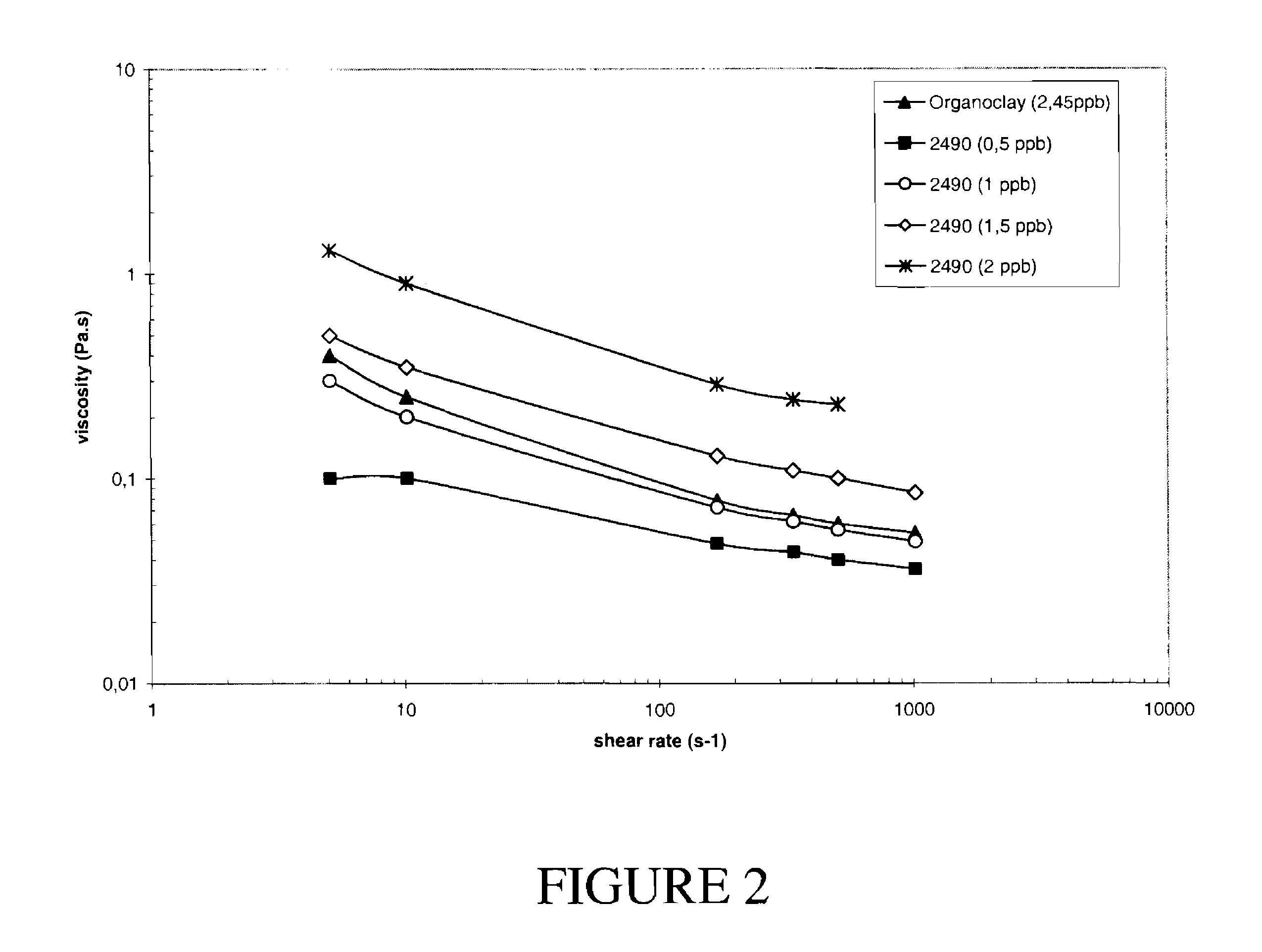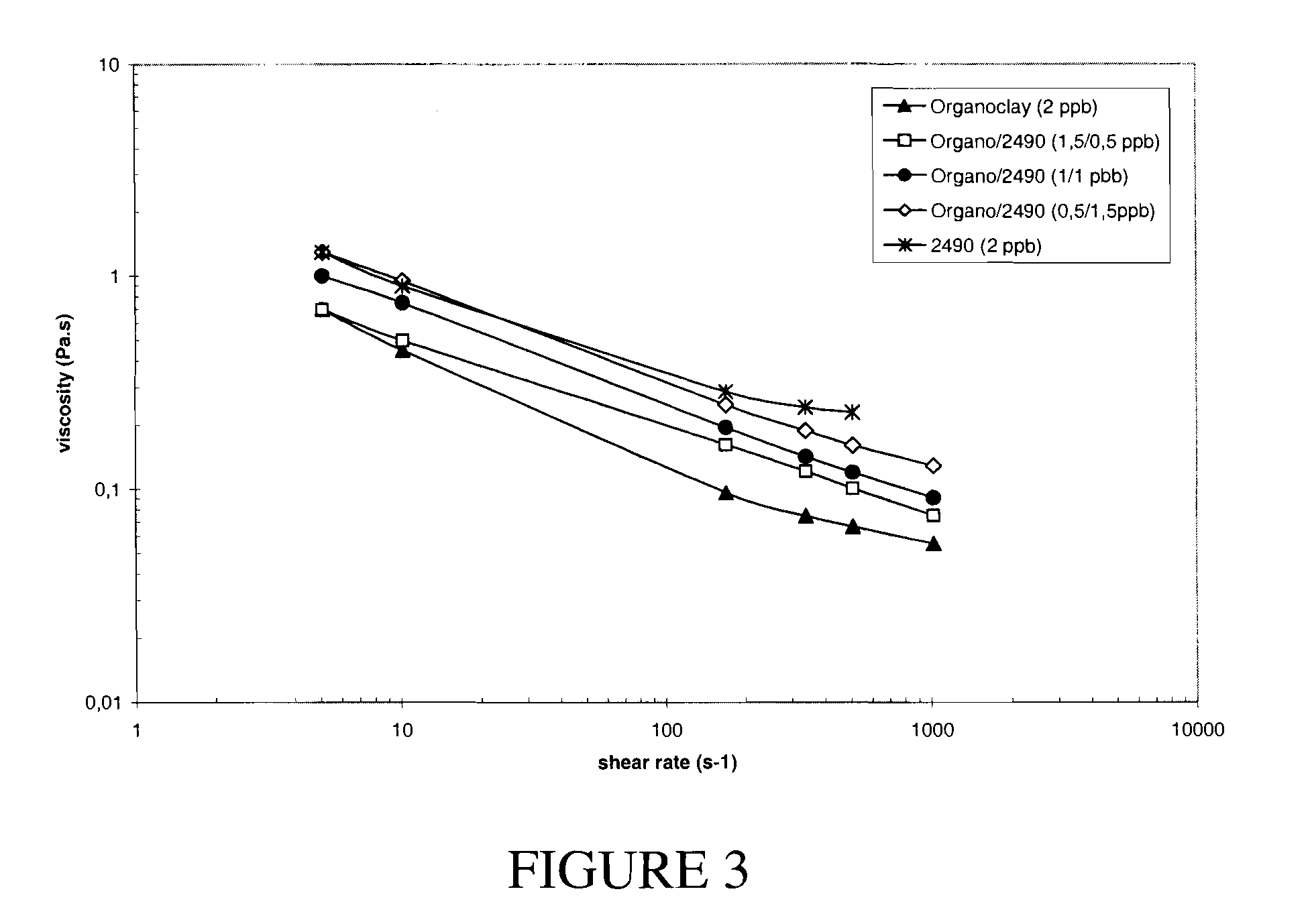Drilling fluid containing chlorosulfonated alpha-olefin copolymers
a technology of chlorosulfonated alpha-olefin and drilling fluid, which is applied in the direction of earth drilling, drilling composition, drilling/well accessories, etc., can solve the problems of deterioration and collapse of shale formation, significant health problems, and traditional oil-based drilling fluid formulations also have significant disadvantages, so as to improve filtration behavior, reduce formation damage, and improve service life
- Summary
- Abstract
- Description
- Claims
- Application Information
AI Technical Summary
Benefits of technology
Problems solved by technology
Method used
Image
Examples
examples 1-6
[0042]In this series of experiments oil-based drilling fluid formulations were made utilizing chlorosulfonated α-olefin copolymers having varying levels of sulfonation as the viscosification agent. These oil-based drilling fluids were compared to an identical oil-based drilling fluid formulation that was made utilizing an organoclay as the viscosification agent. All of the drilling fluids made in this series of experiments had a density of 15 ppg and an oil to water ratio (OWR) of 80:20.
[0043]The constituents employed in making these drilling fluids are identified in Table 1. The conventional oil-based drilling made with the organoclay is identified as Fluid A. The drilling fluids made with the chlorosulfonated α-olefin copolymers are identified as being Fluid B. It should be noted that the drilling fluid made with the organoclay contained 4 ppb of the organoclay. However, the drilling fluids made with the chlorosulfonated α-olefin copolymers contained only 1 ppb of the sulfonated c...
examples 7-11
[0050]In this series of experiments oil-based drilling fluid formulations were made utilizing varying levels of chlorosulfonated α-olefin copolymers. These oil-based drilling fluids were compared to an identical oil-based drilling fluid formulation that was made utilizing an organoclay as the viscosification agent. All of the drilling fluids made in this series of experiments had a density of 18 ppg and an oil to water ratio (OWR) of 85:15.
[0051]The constituents employed in making these drilling fluids are identified in Table 3. The conventional oil-based drilling made with the organoclay is identified as Fluid C. The drilling fluids made with the chlorosulfonated α-olefin copolymers are identified as being Fluid D. It should be noted that the drilling fluid made with the organoclay contained 2.45 ppb of the organoclay. However, the drilling fluids made with the chlorosulfonated α-olefin copolymers contained 0.5 ppb, 1 ppb, 1.5 ppb, and 2 ppb of the sulfonated copolymer. The chloros...
examples 12-16
[0057]In this series of experiments oil-based drilling fluid formulations were made utilizing a combination of a chlorosulfonated α-olefin copolymer and an organoclay as the viscosification agent (see Fluid F, Fluid G, and Fluid H). For comparative purposes a drilling fluid was also made utilizing only an organoclay as the viscosification agent (Fluid E). Also, for further comparative purposes an additional fluid was made that employed only a chlorosulfonated α-olefin copolymer as the viscosification agent (Fluid I). All of the drilling fluids made in this series of experiments had a density of 18 ppg and an oil to water ratio (OWR) of 85:15.
[0058]The composition of the fluids made in this series of experiments is depicted in Table 5.
[0059]
TABLE 5ComponentFluid EFluid FFluid GFluid HFluid IOil 160 ppbPrimary emulsifier10.5 ppbSecondary emulsifier 7 ppbOrganoclay2 ppb1.5 ppb1 ppb0.5 ppb—Viscosifier—0.5 ppb1 ppb1.5 ppb2 ppbFluid Loss Reducer 4.2 ppbLime 0.7 ppbBrine (26%) 31 ppbWeig...
PUM
| Property | Measurement | Unit |
|---|---|---|
| weight percent | aaaaa | aaaaa |
| weight percent | aaaaa | aaaaa |
| weight percent | aaaaa | aaaaa |
Abstract
Description
Claims
Application Information
 Login to View More
Login to View More - R&D
- Intellectual Property
- Life Sciences
- Materials
- Tech Scout
- Unparalleled Data Quality
- Higher Quality Content
- 60% Fewer Hallucinations
Browse by: Latest US Patents, China's latest patents, Technical Efficacy Thesaurus, Application Domain, Technology Topic, Popular Technical Reports.
© 2025 PatSnap. All rights reserved.Legal|Privacy policy|Modern Slavery Act Transparency Statement|Sitemap|About US| Contact US: help@patsnap.com



